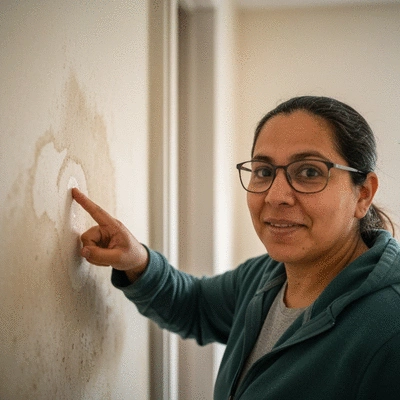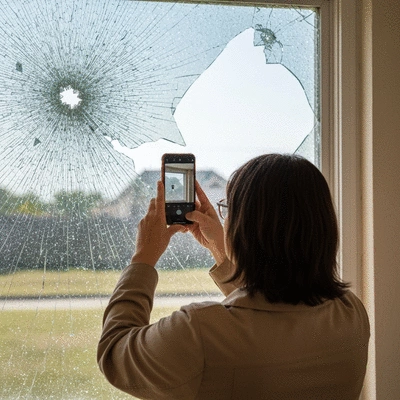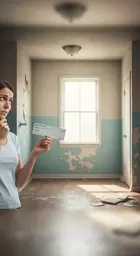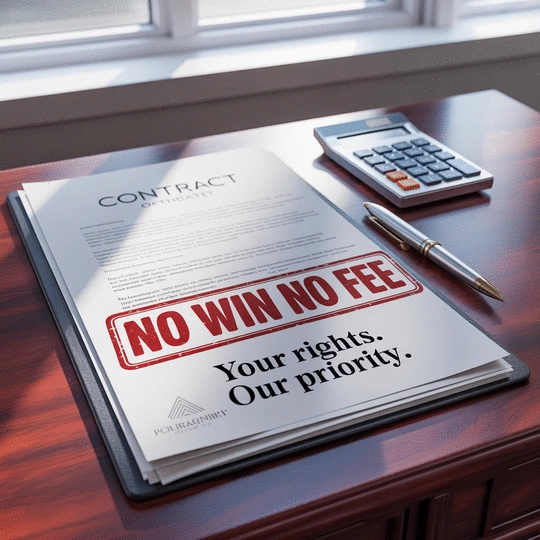Understanding Housing Disrepair Claims

Posted on: 2025-08-11
By: Sarah Thompson
Understanding your rights as a tenant is essential for ensuring a safe and habitable living environment. As housing disrepair claims become more prevalent, knowledge is power. Here’s what you will learn about navigating these claims and asserting your rights effectively.
What You Will Learn
- Housing disrepair includes conditions like dampness, mold, and unsafe heating systems that can impact your quality of life.
- Tenants have the right to a safe living environment, request repairs, and seek compensation for damages due to disrepair.
- Landlords must adhere to health and safety standards, including regular safety checks and proper maintenance.
- The Landlord and Tenant Act outlines landlords' responsibilities, ensuring properties are fit for habitation and maintained properly.
- Recent legislative changes have strengthened tenant protections against disrepair and enhanced support for legal aid in housing disputes.
- Documenting evidence of disrepair and communicating effectively with your landlord are essential steps in making a successful claim.
- Engaging Environmental Health Officers can provide additional support and help enforce safety standards in rental properties.
Key Aspects of Housing Disrepair Claims
Understanding tenants' rights and landlord obligations can significantly affect the outcome of housing disrepair claims. Below is a compact visual representation of the essential information.
Tenant Rights
- Safe and habitable living environment
- Request repairs and maintenance
- Protection against retaliatory eviction
- Compensation for damages
Landlord Obligations
- Fit for habitation
- Maintain structure and exterior
- Provide adequate heating and hot water
- Safe electrical and gas appliances
Common Disrepair Issues
- Leaking roofs or windows
- Unsafe electrical systems
- Pest infestations
- Heating or hot water failures
Recent Legislative Changes
- Stronger penalties for landlords
- Enhanced tenant rights on eviction
- Increased legal aid support
Understanding Housing Disrepair Claims and Tenant Rights
Housing disrepair can significantly impact your quality of life as a tenant. It's crucial to understand what constitutes housing disrepair and how your rights protect you in these situations. Disrepair refers to any condition in a rental property that makes it unsafe or unfit for living. This can include issues like dampness, mold, broken heating systems, or structural hazards. Understanding these aspects can empower you as a tenant, ensuring that you know when and how to take action against your landlord.
As you navigate these claims, it's essential to be informed. Many tenants feel overwhelmed by the legal jargon and processes involved. That's why at Solicitors No Win No Fee, we're dedicated to breaking down these complexities and providing you with clear, accessible information.
What Constitutes Housing Disrepair?
Housing disrepair can manifest in various ways, affecting both your living conditions and health. Here are some common examples:
- Leaking roofs or windows that lead to water damage
- Unsafe electrical systems that pose a risk of fire
- Pest infestations, such as rodents or insects
- Heating or hot water systems that are not functioning
Identifying these issues early on is vital. If you notice any of these problems, document them and communicate them to your landlord promptly. Failing to address disrepair can lead to further complications and potential harm to your well-being.
Key Tenant Rights Under the Housing Act
Under the Housing Act, tenants in the UK are granted several rights that protect them from disrepair. Here are the key rights you should be aware of:
- Right to a safe and habitable living environment
- Right to request repairs and maintenance
- Protection against retaliatory eviction when you report disrepair
- Right to compensation for damages caused by disrepair
Understanding these rights can help you advocate for yourself effectively. Remember, you’re not alone in this — many tenants face similar challenges, and knowing your rights is the first step toward resolving them.
Health and Safety Standards in Rental Properties
It's essential for landlords to adhere to health and safety standards to ensure the well-being of their tenants. Properties should meet specific guidelines, which include:
- Regular gas safety checks on appliances
- Safe electrical installations and maintenance
- Proper ventilation to prevent dampness and mold
- Accessible emergency exits and smoke alarms

If your rental property is not meeting these health standards, you have the right to raise these issues with your landlord. Taking action not only safeguards your health but also sets a precedent for maintaining safety standards in rental properties for all tenants.
Pro Tip
When dealing with housing disrepair, always keep a detailed record of your communications with your landlord. This includes dates, responses, and any promises made regarding repairs. Having a clear timeline and documentation can significantly strengthen your claim if the situation escalates.
Navigating the Legal Framework: Landlord Obligations
As a tenant, it’s crucial to understand landlord obligations as outlined in the legal framework governing rental properties. The responsibilities set forth in the law ensure that landlords maintain safe and habitable living conditions for their tenants. Ignoring these obligations not only affects your living situation but could also lead to legal repercussions for landlords.
In this section, I’ll guide you through key aspects of the Landlord and Tenant Act and recent legislative changes. Understanding these can empower you to advocate for your rights and ensure your home is a safe haven.
The Landlord and Tenant Act Explained
The Landlord and Tenant Act 1985 is a vital piece of legislation that lays out the general responsibilities of landlords and the rights of tenants. This act specifies what is expected from landlords regarding maintenance and repairs. Here are some of the key responsibilities:
- Ensuring the property is fit for habitation
- Maintaining the structure and exterior of the building
- Providing adequate heating and hot water
- Keeping electrical and gas appliances in safe working order
Understanding these obligations helps tenants know when their landlord is not fulfilling their duties. If you find that your landlord isn’t meeting these standards, it’s important to document any issues and communicate them effectively.
Recent Legislative Changes Impacting Tenant Rights
In recent years, there have been significant legislative changes that enhance tenant rights. These changes aim to provide further protection and support for tenants facing disrepair issues. Here are some of the recent updates you should be aware of:
- The introduction of stronger penalties for landlords who fail to comply with safety standards
- Enhanced rights for tenants to challenge eviction notices if the property is in disrepair
- Increased support for tenants seeking legal aid for housing disputes
These legislative shifts can offer you additional leverage when dealing with disrepair claims. Always stay informed about changes that may affect your rights as a tenant!
Landlord Responsibilities Under Housing Standards
Beyond the basics outlined in the Landlord and Tenant Act, landlords must adhere to various housing standards that aim to keep properties safe and livable. These responsibilities often include:
- Addressing leaks, dampness, and pest infestations promptly
- Ensuring adequate insulation and ventilation to support health and comfort
- Maintaining safe communal areas in multi-tenant properties
If your landlord is neglecting these responsibilities, it can be frustrating and overwhelming. Remember, you have the right to live in a safe and healthy environment, and it’s okay to assert that right!
Step-by-Step Guide to Making a Housing Disrepair Claim
Making a housing disrepair claim may feel daunting, but with the right steps, you can navigate this process effectively. Let’s break it down into manageable parts so you can confidently pursue your claim.
Documenting Disrepair: Essential Evidence Collection Techniques
Gathering evidence is a crucial step in any housing disrepair claim. It’s not just about taking photos; you need to build a solid case. Here are some essential techniques:
- Take clear photographs of the disrepair, including dates and any visible damages
- Keep written records of communication with your landlord regarding repairs
- Collect any relevant emails or messages that document the issue

Having this evidence will strengthen your claim and ensure that you have all the necessary support to demonstrate the landlord's negligence.
How to Notify Your Landlord and What to Include
Once you’ve documented the disrepair, notifying your landlord is the next step. Your notification should be clear and professional. Here’s what to include:
- A description of the issues you’ve encountered
- Any evidence you’ve collected (e.g., photos, previous correspondence)
- A reasonable timeframe for the landlord to respond or address the issues
Effective communication can often lead to quicker resolutions, so don’t hesitate to make your request clear and assertive!
Understanding Your Next Steps: Escalation Process to Legal Action
If your landlord does not respond or fails to address the disrepair, understanding the escalation process is vital. Here are the steps you may consider:
- Send a follow-up letter reiterating your request
- Contact local housing authorities or environmental health officers
- If all else fails, consider seeking legal advice to explore your options for taking formal legal action
Remember, it’s your right to live in a well-maintained property, and you shouldn’t hesitate to take the necessary steps to protect your interests!
Utilizing Environmental Health Officers for Inspections
If your landlord continues to neglect their responsibilities, engaging Environmental Health Officers (EHOs) can be a game-changer. EHOs can inspect your property and determine if it meets health and safety standards. Here’s how to go about it:
- Document your complaints and previous attempts to resolve the issue
- Contact your local council to request an inspection
- Provide all evidence collected to the EHO during their visit
EHOs have the authority to enforce standards, and their involvement can significantly bolster your claim.
Frequently Asked Questions About Housing Disrepair Claims
- What constitutes housing disrepair?
- Housing disrepair refers to any condition in a rental property that makes it unsafe or unfit for living. Common examples include dampness, mold, broken heating systems, structural hazards, leaking roofs, unsafe electrical systems, pest infestations, and non-functioning hot water systems.
- What are my key rights as a tenant regarding housing disrepair?
- As a tenant, you have the right to a safe and habitable living environment, the right to request repairs and maintenance, protection against retaliatory eviction when reporting disrepair, and the right to compensation for damages caused by disrepair.
- What are a landlord's main obligations under the Landlord and Tenant Act?
- Under the Landlord and Tenant Act 1985, landlords are obligated to ensure the property is fit for habitation, maintain the structure and exterior of the building, provide adequate heating and hot water, and keep electrical and gas appliances in safe working order.
- How should I document housing disrepair?
- You should take clear photographs of the disrepair (including dates and visible damages), keep written records of all communications with your landlord regarding repairs, and collect any relevant emails or messages that document the issue.
- What should I do if my landlord doesn't respond to my repair requests?
- If your landlord doesn't respond or fails to address the disrepair, you can send a follow-up letter, contact local housing authorities or Environmental Health Officers for an inspection, and if all else fails, consider seeking legal advice to explore formal legal action.
Recap of Key Points
Here is a quick recap of the important points discussed in the article:
- Housing disrepair includes unsafe or unfit conditions like dampness, mold, and broken heating systems.
- Tenants have rights under the Housing Act, including the right to a safe living environment and to request repairs.
- Landlords are legally obligated to maintain properties and adhere to health and safety standards.
- Documenting disrepair thoroughly is essential for making a housing disrepair claim.
- If landlords do not respond to repair requests, tenants can escalate the issue to local authorities or seek legal advice.
 Have you ever found yourself needing legal support after an accident? Understanding After-the-Event
Have you ever found yourself needing legal support after an accident? Understanding After-the-Event
 Understanding the impact of housing disrepair is more than just recognizing unsafe conditions; it's
Understanding the impact of housing disrepair is more than just recognizing unsafe conditions; it's
 Every year, countless tenants face the daunting issue of housing disrepair, often wondering if withh
Every year, countless tenants face the daunting issue of housing disrepair, often wondering if withh
